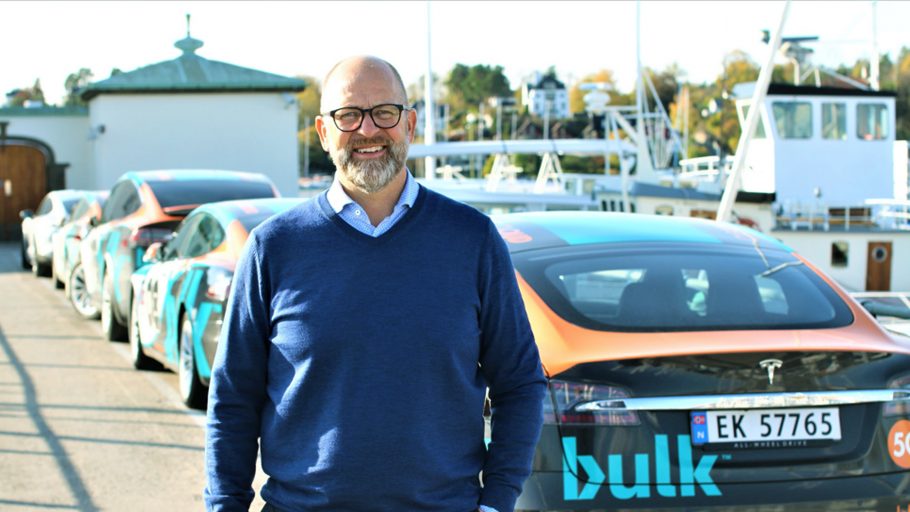The global pandemic has slowed growth and investment in the global data center market this year. But the analysts do not expect this to have lasting effects. Most still expect a sustained CAGR as high as six percent, with sectors like healthcare to hit 16.4 percent.
Still, these positive signs come at a cost. These high-development markets struggle with sustainability and with bringing enough clean power online to support this growth. This is why I got into the business. At Bulk Infrastructure, we see opportunities to do better. And we are making progress.
Follow The Clean Energy
It is gratifying to see growing global support for efforts to expand the role of the Nordics in the data center industry. The contributions of the Nordics toward sustainable infrastructure inspires me. Lasting impacts require bold thinking and even bolder action. These are the drivers behind projects like the Leif Erikson subsea cable, which can unlock some of the world’s largest and most resilient renewable energy sources in both the Nordics and Atlantic Canada. It would join the growing fiber network infrastructure to and from the Nordics, including our own Havfrue and Havhingsten linking the US, UK and Ireland with the Nordics. Further, it will join with our Inter-City Ring connecting four major cities in Norway, including our Oslo-Internet Exchange and Havsil, which will create a high-capacity express route from N01 Campus in Norway to DK01 Campus in Denmark. In addition to our own subsea cable, we are pleased to see other subsea cables being built to connect the Nordics. Cobra, for example, links The Netherlands via Denmark and NO-UK connects Norway and the UK, allowing the expansion of the data center industry in the Nordics with plenty of diversity and resilience on fiber networks.
The Nordics and Atlantic Canada are renewable energy giants, well positioned to lead the way. There are similar energy profiles in both nations. We have large amounts of excess hydropower capacity, cheap air-cooled solutions and offer low PUE. We spill less power. The less power you spill, the lower the technical cost needed to drive down PUE to acceptable levels. In most markets, higher technical costs come at the additional cost of a higher CO2 footprint. Power has a loss in the grid as it travels over distance. This is why the Nordics have a long history of building power hungry industries close to power production. This way we will save a normal grid loss of 5-8 percent and data centers at the right locations can improve global power efficiencies.
A subsea cable project connecting Atlantic Canada with the Nordics can unlock these traits and deliver even more sustainable global capacity. We are ready for the industry and market conditions to support this very exciting prospect.
Which Comes First?
Bringing sustainability to a global audience is our mission and purpose. Sustainability is a race the world cannot afford to lose. But what will push us forward? Is it the networks? Or is it the data centers?
Our N01 campus near Kristiansand, Norway started as a Renewable Energy campus idea. That reality is growing. It sits on a 300ha site with up to 1GW of renewable power and 100 percent availability (12 independent grid feeds). N01 ideally is connected by diverse and high-capacity, direct intercontinental and regional fiber routes and international transport hubs.
Linking to Canada Might be The Next Big Thing
There are similar discussions for trans-arctic cable projects that could shorten the routes connecting Europe with Asia. These bold moves could bring major benefits.
Changing The Tender
As leaders, the decisions we make have significant impacts. We understand this and act accordingly, weighing the risks and benefits in the long and the short term. When it comes to sustainability in the data center industry, we are seeing the finance community influencing decision-making in new ways.
Young Greta Thunberg proved to be a real eye-opener for the industry in the movement’s capacity to shift traditional thinking. We are seeing meaningful shifts in the finance and investor community. Market movers like Blackrock are placing greater importance on sustainability. Financiers are putting real numbers into sustainable companies and assigning risk scores to those who lag behind.

One signal of industry change is found in requests for proposals. The enterprise market had not been asking the sustainability question until recently. That is changing. As a cloud service provider, I can now buy zero-emissions data cloud products. I can now ask myself, is some added latency worth being zero emissions? Do not forget that these surplus power hubs also have the lowest cost of power. This is why we see the CFOs of companies starting to pay attention. It is simply too good to ignore.
I am glad to see tenders coming out that include options for load-splitting and geo-location. Customers should look for things like split loads and project designs that offer more. How else can we move project architecture toward a new standard?
ABOUT THE AUTHOR
Peder Nærbø is the founder of Bulk Infrastructure, a leading provider of sustainable digital infrastructure in the Nordics. His company is an industrial investor, developer and operator of industrial real estate, data centers and dark fiber networks.
Nærbø is a visionary and has found his purpose of unlocking the large surplus of renewable energy in Nordic region for the growing data center industry. His company has built renewable energy data centers with terrestrial and subsea connectivity both regionally and inter-regionally. In 2019, Nærbø received the prestigious Business Leader of the Year award at DCD Awards for his personal engagement to create a sustainable data center industry.

